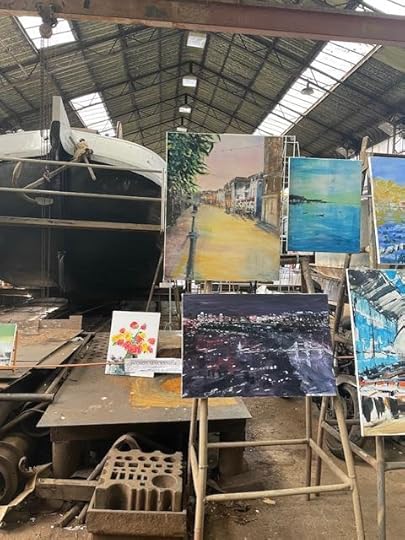Eel pie island
Eel Pie Island, a sliver of land in the Thames at Twickenham, southwest London, is easy to overlook. Modest in size and accessible only by a narrow footbridge, it is nonetheless steeped in a history as rich and unruly as the river that surrounds it. In the 1950s and early 1960s, it rose to fame as a cradle of British jazz. The Eel Pie Island Hotel, a once-elegant, long-decaying edifice, opened its doors to the rebellious strains of New Orleans-style jazz and later to the electric roar of rhythm and blues. Legends such as The Rolling Stones, The Who, and Pink Floyd once filled its warped floorboards with sound.
Today, music has given way to another form of expression. The island is home to a thriving, eccentric community of artists and craftspeople. More than two dozen studios—some tucked into converted boatyards, others scattered among ivy-clad sheds and hidden courtyards—buzz with creative life. Painting, sculpture, photography, ceramics, and textiles are all practiced here, behind doors that swing open to the public only twice a year, in June and December. This weekend happened to be one of those rare occasions.
I had recently visited a friend’s studio on Johnson Island, another tiny Thames islet not far from here, and that memory lingered warmly. So when I heard that Eel Pie Island was opening its studios, I persuaded my dear friend Alfy to come along.
We both found it utterly enchanting. The rain fell as we wandered between studios, ducking beneath awnings and listening to the patter on tin roofs. Somehow, the weather only deepened the island’s peculiar magic. The artists were welcoming, the work inspiring, and the island itself felt like something from a dream: half-forgotten, half-invented.
We ended our afternoon with cream tea on the riverbank, steam rising from our cups as the Thames flowed silently past. What a day!



